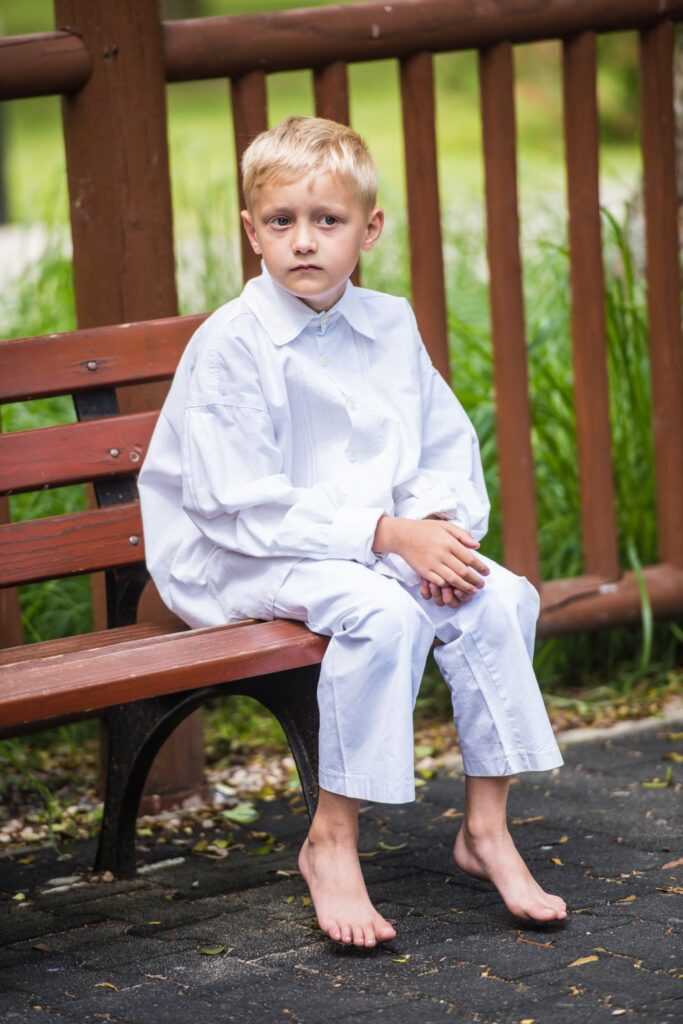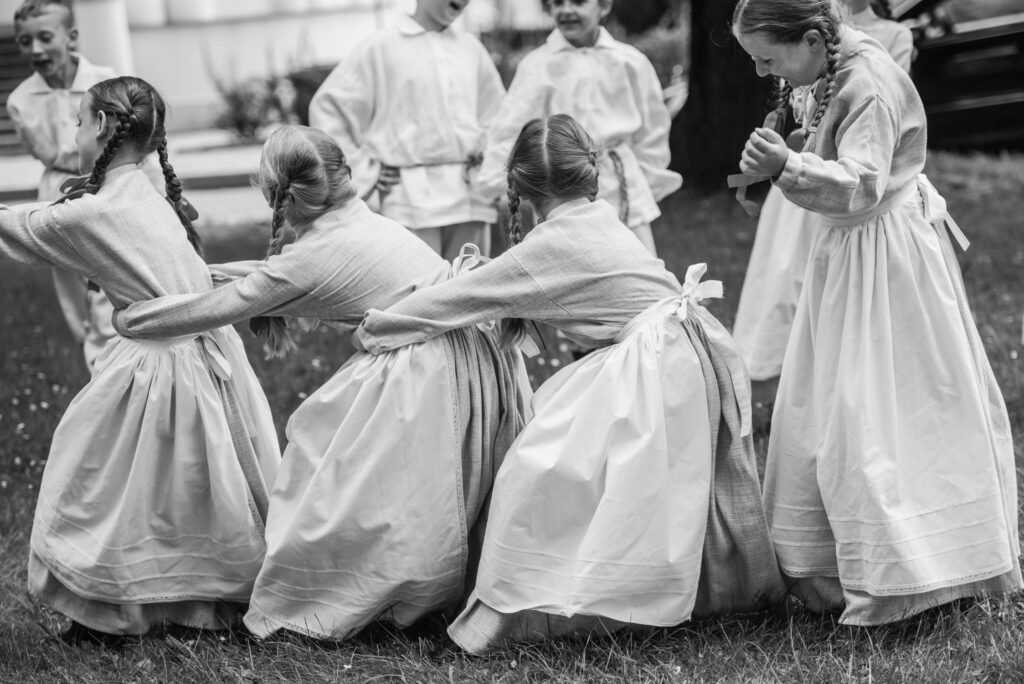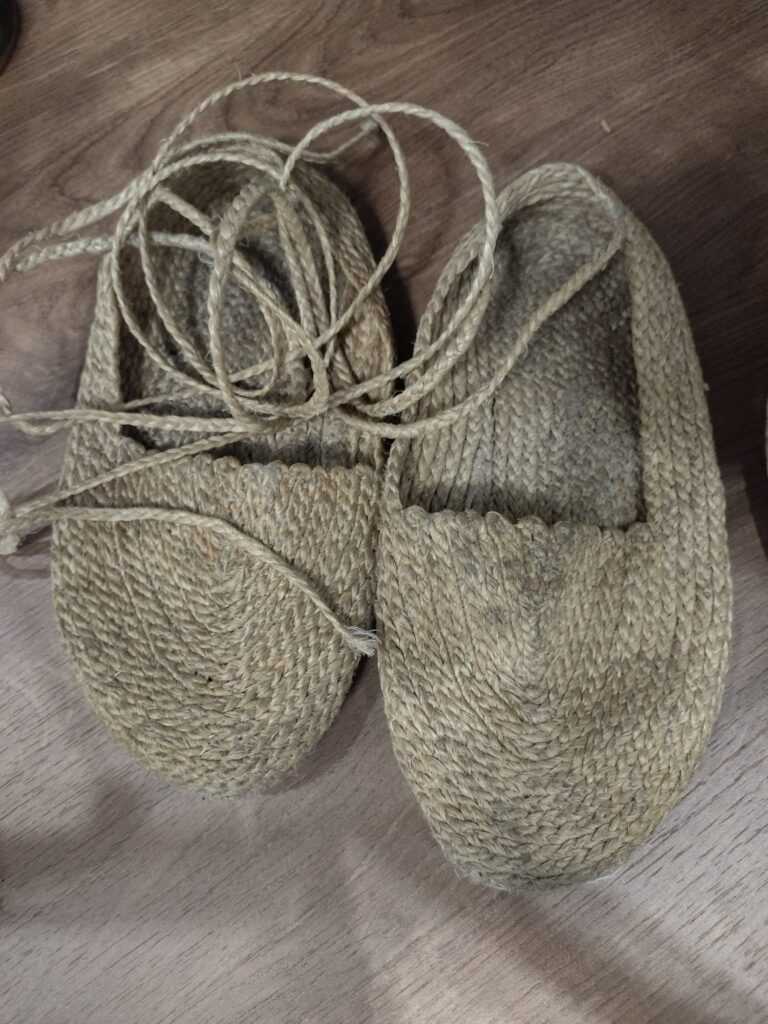The ancestors, living in our lands, were a poor people, living mainly through agriculture. For this reason, they did not own much clothing. They wore everyday clothes made of cheaper materials, mainly hemp, later also linen. They were not decorated with embroidery. A large part of the population did not wear shoes to work. On colder days, they would wrap their feet in so-called “onucki” (pieces of cloth tied to the foot with string), and they also wove shoes from lime bark.
A woman’s clothing consisted of a shirt, petticoat, skirt and a pinafore; married women also wore a headdress. “Undergarments” – i.e. the shirt and petticoat – were made of hemp, and later of thick linen cloth. Sometimes the material was bleached on grass. Shirts were long, with a so-called headpiece (the straight part constituting the underclothing), and had a cropped cut (cut without any undercuts or trims, all elements – front, back, sleeves, cropped sleeves, cuffs and collar – were rectangular or square in shape and sewn along straight lines) with a lined collar. Wide sleeves were creased and sewn into the cuff. Skirts were sewn from plain self-patterned fabrics, using four 70 cm wide pieces of fabric. At the end of the 19th century, so-called painted skirts became fashionable – skirts decorated with a hand-made, single-colour print. They were durable and did not get dirty easily, so they were used both for festive wear and for work1. The skirts were belted with a skirt cover which, on the one hand, protected the skirt from getting dirty and, on the other hand, helped with work – it could be used to pick vegetables or fruit or seeds for sowing. In colder weather, linen skirts were put on top. Girls did not wear head coverings, only in hot weather or cooler days did they put on kerchiefs for protection. Married women always covered their heads with kerchiefs.
Men’s clothing consisted of a shirt laced with thong or hemp rope, trousers and a head covering. Shirts, like women’s shirts, were cropped and long, reaching just above the knee, and were worn pulled over trousers. These, in turn, were called leggings or breeches and were sewn, like skirts, from self-made linen. Each leg was made from a single sheet of fabric, widened at the front with a triangular wedge. The trousers had an opening on the right side. On colder days, several pairs of trousers were worn. On their heads, men most often wore straw hats to work. They were made by hand, usually while grazing cattle, using unripe rye or blades of dog grass. The hat was sewn together from a toothed strip of plait, starting from the centre and arranged in a spiral. In colder weather, the men, like the women, wore linen coats.
Children wore only casual clothes. For a long time, irrespective of gender, their basic garment was the “chemise” – a long shirt, sewn “out of the ordinary”, in which they could walk for several years. Initially, the shirt reached to the ground and the sleeves were tied with string at the wrists, so that they hung down as little as possible. At the waist, girdles



1E. Piskorz – Branekova, Traditional costumes and embroideries of the Hrubieszów – Tomaszów region, Zamość, 2011, pp.14-35
